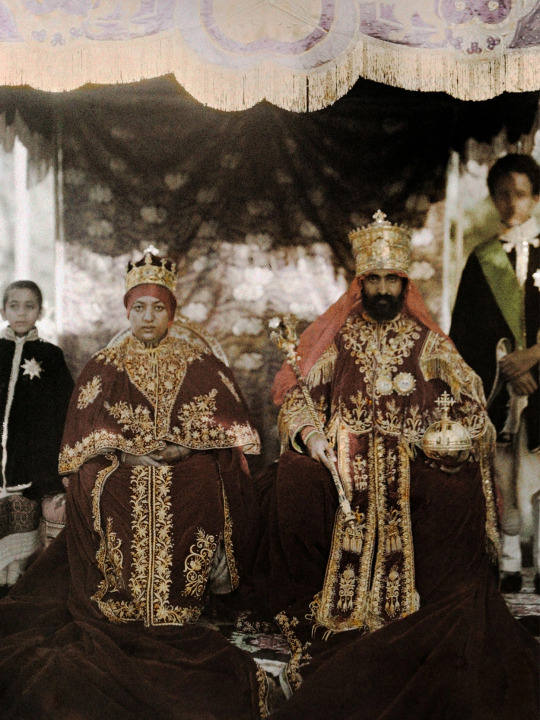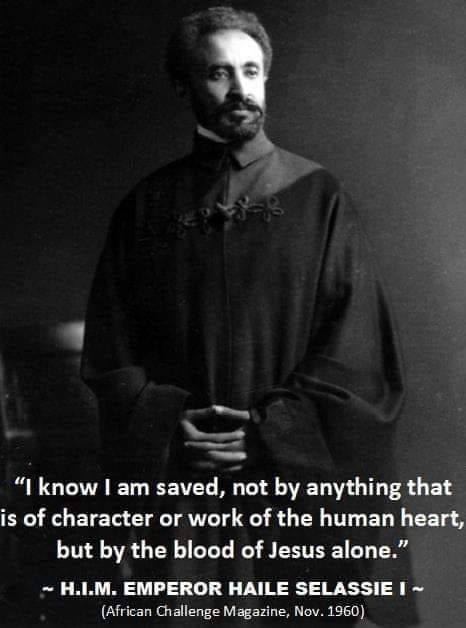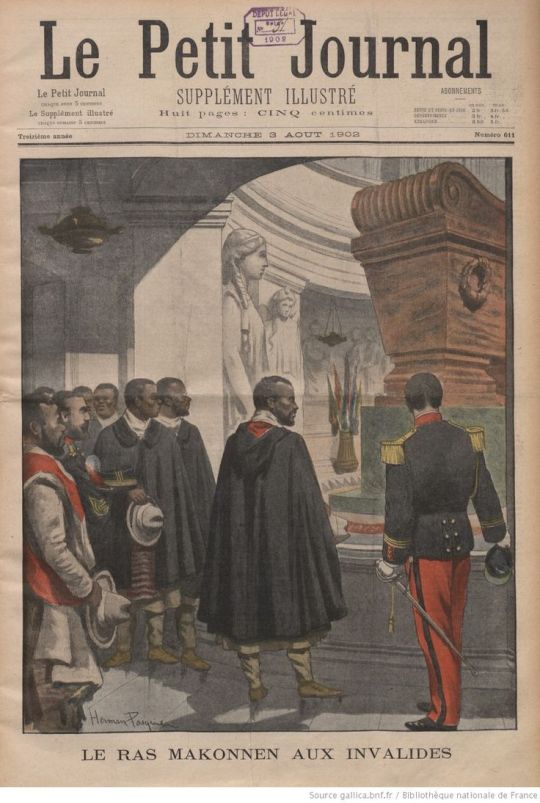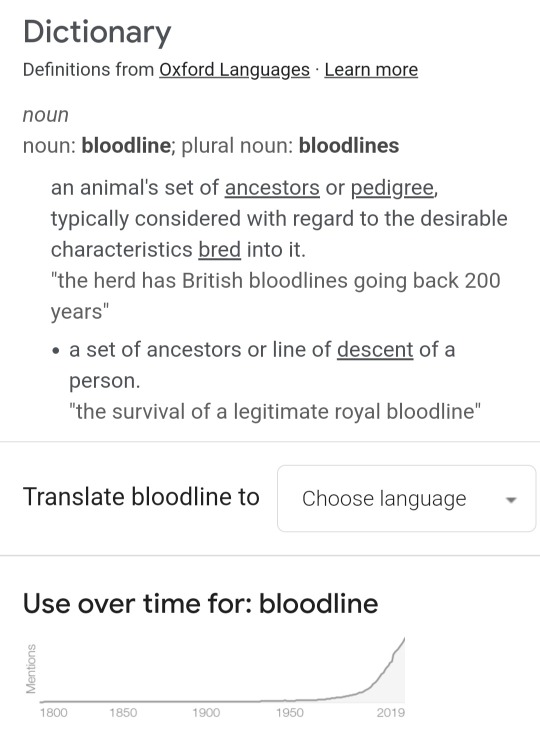#Haile Selassie I
Explore tagged Tumblr posts
Photo

o imperador da etiópia haile selassie i e sua esposa, a imperatriz menen asfaw. o nome de registro de haile selassie era ras tafari makonnen, e sua ascensão ao trono fez com que muitos jamaicanos acreditassem que ele havia cumprido uma profecia bíblica, marcando o início da fé rastafári. foto de w. robert moore.
10 notes
·
View notes
Text
.@ThisIsBlazeMob Represent For The "Rastafari Children" On New Single
We’re kicking down your door with new music, and it’s good music for your systems. Reggae trio Blaze Mob has been on the scene for a number of years delivering music that connects with the Rastafarian faith, encourages upliftment of the people, and promotes unity. Consisting of Shaka Rock, Gyasi Gong, and King Saeed, who are sons of the late legendary Reggae Artist and Black Uhuru member Garth…
#13thstreetpromo#13thstreetpromotions#Blaze Mob#blog#Dale Virgo#DZL Records#Garth Dennis#Gyasi Gong#Haile Selassie I#jamaica#jamaican#King Saeed#music#Rastafari Children#reggae#reggae music#riddim#Shaka Rock#Tuff Gong#wordpress
0 notes
Text
Jamaica: The Soulful Pulse of Global Influence
Jamaica, with its vibrant culture and rich history, has undeniably left an indelible mark on the global landscape through its music, art, and spiritual heritage. At the heart of Jamaica’s influence lies the timeless rhythms of reggae, the spiritual ethos of Rastafari, and the iconic legacy of Bob Marley. As we delve into the depths of Jamaica’s cultural tapestry, we uncover a profound connection…

View On WordPress
#Bob Marley#Don G#Haile Selassie I#iKON#Jamaican Culture#Jamaican History#Jamaican Music#Lion of Judah#Majestic Lion#One Love#Season One
0 notes
Text
since like three people asked and I don't want to derail the other post - yes, the Ethiopian calendar is also solar and has thirteen months!
There are 12 months of 30 days each (meskerem, tikimt, hidar, tahsas, tir, yekatit, meggabit, miyazya, ginbot, sene, hamle, nehasa) and then all the extra days in a wee 5-day month at the end (pagume). This month also gets an extra day during leap years.
#it's also 2016 in ethiopia right now (new year coming up in like. two and a half weeks)#personally i like their system but also always trips me up#especially because haile selassie managed to make two very similar policy declarations exactly 7 years apart (1924 and 1931)#so I had to check which calendar we were in. for every source#these past two terms i've been in calendar hell. I was either in the ethiopian the gregorian the julian or the other julian#but had to talk about it all in gregorian#she speaks
12 notes
·
View notes
Text

(spotted on facebook)
16 notes
·
View notes
Text



Ah yes, typical methods of imperial conquest and expansion.

Another typical Napoleonic action: whooping Italy's behind!!!

A WILD ENCOUNTER! Rimbo is that you!?!?!?! Did you write any poems about Ras Makonnen?!

Modern-day Ethiopia lore...

I think this is a royal personage of Ethiopia who was Haile Selassie's father. (pinterest)
#memes#napoleon bonaparte#ras makonnen#isthisnapoleoncute?/j#i mean no harm#btw ras makonnen did not become emperor but his son did#haile selassie was coincidentally his second son#so is this a “if the king of rome did become emperor” kind of situation
14 notes
·
View notes
Text
“We must look into ourselves, into the depth of our souls. We must become something we have never been and for which our education and experience and environment have ill-prepared us. We must become bigger than we have been: more courageous, greater in spirit, larger in outlook.”
- Haile Selassie I
109 notes
·
View notes
Text

In Rastafari, particularly within the Bobo Ashanti Mansion, the trio of Marcus Garvey, Haile Selassie I, and King Emmanuel Charles Edwards is known as Rastafari Holy Trinity or the Black Christ Trinity. It represents prophet (Garvey), king (Selassie), and priest (Edwards), symbolizing liberation, divinity, and spiritual leadership.
#black people#black#black history#black tumblr#blacktumblr#pan africanism#black conscious#africa#black power#black empowering#marcus garvey#haile selassie#king emmanuel charles edwards#Bobo Ashanti#jah rastafari#rastafari#Black Christ trinity#Rastafari Holy Trinity
32 notes
·
View notes
Text

𝗗𝗥𝗘𝗔𝗗𝗟𝗢𝗖𝗞𝗦
In the 1930s, dreadlocks were a fashionable hairstyle among Rastafarians. The Rastafarian movement, which originated in Jamaica, is based on a blend of Christian and African spiritual ideas. Rastafarians believe that their hair represents the power and energy of their African ancestors, and they wear dreadlocks to reflect this belief. Dreadlocks are religious, but they have also become a sign of defiance and counterculture.
In the 1960s and 1970s, hippies and other groups who didn't like mainstream culture liked to wear dreadlocks. People have used locs for a variety of reasons throughout history. The Maasai warriors of Africa, for example, are renowned for wearing long, thin red dreadlocks dyed with red root extracts or red ochre. However, in Nigeria, infants who are born with naturally locked hair are referred to as "Dada" by the Yoruba.
The Rastafari movement thinks that dreadlocks are a sign of the Lion of Judah, which sometimes shows up on the Ethiopian flag. Rastafari supporters believe that Haile Selassie is a direct descendant of King Solomon and Queen Sheba through their son Menelik I and that the Nazarites recorded in the Bible inspired them to wear dreadlocks.
People of all races and ethnicities now sport dreadlocks as a fashionable hairstyle in many parts of the world. While they have religious and cultural value for some, many individuals just wear them as a fashion statement. Despite their rising popularity, dreadlocks have caused controversy and prejudice.
They have been outlawed in several businesses and schools, and some people have encountered prejudice due to their haircut. In the end, the history of dreadlocks is long and varied. They have deep roots in ancient cultures and are still important to culture today.
83 notes
·
View notes
Text

Kandake, kadake or kentake (Meroitic: 𐦲𐦷𐦲𐦡 kdke), often Latinised as Candace (Ancient Greek: Κανδάκη, Kandakē), was the Meroitic term for the sister of the king of Kush who, due to the matrilineal succession, would bear the next heir, making her a queen mother.

Pliny writes that the "Queen of the Ethiopians" bore the title Candace, and indicates that the Ethiopians had conquered ancient Syria and the Mediterranean.
In 25 BC the Kush kandake Amanirenas, as reported by Strabo, attacked the city of Syene, today's Aswan, in territory of the Roman Empire; Emperor Augustus destroyed the city of Napata in retaliation.
Cassius Dio wrote that Kandake's army advanced as far as the Elephantine in Egypt, but Petronius defeated them and took Napata, their capital, and other cities.
Four African queens were known to the Greco-Roman world as the "Candaces": Amanishakheto, Amanirenas, Nawidemak, and Malegereabar

Biblical usage
The Baptism of Queen Candace's Eunuch (c. 1625–30, attributed to Hendrick van Balen and Jan Brueghel the Younger)
In the New Testament, a treasury official of "Candace, queen of the Ethiopians", returning from a trip to Jerusalem, met with Philip the Evangelist:
Now an angel of the Lord said to Philip, "Rise and go toward the south to the road that goes down from Jerusalem to Gaza." This is a desert place. And he rose and went. And there was an Ethiopian, a eunuch, a court official of Candace, queen of the Ethiopians, who was in charge of all her treasure. He had come to Jerusalem to worship
He discussed with Philip the meaning of a perplexing passage from the Book of Isaiah. Philip explained the scripture to him and he was promptly baptised in some nearby water. The eunuch 'went on his way, rejoicing', and presumably therefore reported back on his conversion to the Kandake

Evidence outside of Nubia that shows additional links to Kushite's queenship concept are found in Ethiopia. Ethiopia has a long dynastic history claimed to be over three millennia from before 1000 BC to 1973, the year of the overthrow of the last Menelik emperor, Haile Selassie. The Ethiopian monarchy's official chronicle of dynastic succession descends from Menelik I includes six regnant queens referred to as Kandake. The following queens from the king list have "Kandake" added to their name:
Nicauta Kandake (r. 740–730 BCE)
Nikawla Kandake II (r. 342–332 BCE)
Akawsis Kandake III (r. 325–315 BCE)
Nikosis Kandake IV (r. 242–232 BCE)
Nicotnis Kandake V (r. 35–25 BCE)
Garsemot Kandake VI (r. 40–50 CE) – Allegedly the queen who ruled at the time of the Biblical story of the Ethiopian eunuch.
Twenty-one queens are recorded as sole regent in the kingdom of Ethiopia until the 9th century CE. The conquest of Meroe by the Axumite King Ezana may well provide the historical fiction for the Ethiopian dynastic claim to the Nubian Kandakes and their kings, as it was from this point onwards that the Axumites began calling themselves "Ethiopians", a Greco-Roman term previously used largely for the ancient Nubians. For example, Makeda, Queen of Sheba, in the Kebra Nagast, is also recognized as Candace or "Queen Mother".

Alexandrian legend
Jewellery of Kandake Amanishakheto, from her tomb
A legend in the Alexander romance claims that "Candace of Meroë" fought Alexander the Great. In fact, Alexander never attacked Nubia and never attempted to move further south than the oasis of Siwa in Egypt. The story is that when Alexander attempted to conquer her lands in 332 BC, she arranged her armies strategically to meet him and was present on a war elephant when he approached. Having assessed the strength of her armies, Alexander decided to withdraw from Nubia, heading to Egypt instead. Another story claims that Alexander and Candace had a romantic encounter.
These accounts originate from Alexander Romance by an unknown writer called Pseudo-Callisthenes, and the work is largely a fictionalized and grandiose account of Alexander's life. It is commonly quoted, but there seems to be no historical reference to this event from Alexander's time. The whole story of Alexander and Candace's encounter appears to be legendary.
John Malalas has mixed the Pseudo-Callisthenes material with other and wrote about the affair of Alexander with Kandake, adding that they got married. Malalas also wrote that Kandake was an Indian queen and Alexander met her during his Indian campaign

List of ruling kandakes
Pyramid of Amanitore in modern day Sudan
See also: List of monarchs of Kush
At least eleven kandakes also ruled in their own right as monarchs (i.e. queen regnants) of Kush:
Nahirqo (middle 2nd century BC)
An unknown queen regnant (end of the 2nd–first half of the 1st century BC)
Amanirenas (end of the 1st century BC–beginning of the 1st century AD)
Amanishakheto (early 1st century AD)
Shanakdakhete (first half of the 1st century AD)
Nawidemak (first half of the 1st century AD?)
Amanitore (middle 1st century AD)
Amanikhatashan (middle 2nd century AD?)
Amanikhalika (second half of the 2nd century AD)
Patrapeamani [de] (early 4th century)
Amanipilade (mid-4th century)
Based on the reading of a single inscription, some lists give two later kandakes named Maloqorebar (266–283 AD) and Lahideamani (306-314 AD). A recently discovered inscription corrects this earlier reading, however, showing that neither was a woman.

Archaeological sources
The Kandakes of Meroe were first described through the Greek geographer's Strabo account of the "one-eyed Candace" in 23 BCE in his encyclopedia Geographica. There are at least ten regnant Meroitic queens during the 500 years between 260 BCE and 320 CE, and at least six during the 140 periods between 60 BC and 80 AD. The iconographic portrayal of the Meroitic queens depicts them as women often alone and at the forefront of their stelae and sculptures and shown in regal women's clothing. Early depictions of Kushite queens typically do not have Egyptian elements making their appearance drastically different from their Kushite men and Egyptian counterparts. As seen in the Dream Stela of Tanawetamani, a large shawl was wrapped around the body with an additionally decorated cloak worn over the first; typically, a small tab-like element hanging below the hem touches the ground and has been interpreted as a little tail. The first association with this element of dress is with Tarharqo's mother during his coronation ceremony.
It was not until George Reisner excavated the royal cemeteries at El Kurru and Nuri that archaeological material became available to study the Kushite queenship. Additionally, a few royal tombs of Kushite women have been found at Meroe's cemetery and in Egypt at Abydos (Leahy 1994). At El Kurru, six pyramids belong to royal women of the 25th Dynasty and a pyramid for queen Qalhata of the Napatan period. At Nuri, the tombs of royal women are located on the west plateau with more inscriptional information available at the site, linking the roles that the kings' mothers played in succession and their importance during the Kushite dynasty.
The most important event that Kushite women participated in was kingship's ensured continuity, where royal women were mentioned and represented in the royal ceremony. The lunettes of the stelae of Tanawetamani, Harsiyotef, and Nastasen all provide iconographic and textual evidence of these kings' enthronement. In all of these stelae, the king is accompanied by a female member of his family, mother, and wife. The king's mother played an essential role in the legitimacy of her son as the king; textual evidence from Taharqo's coronation stelae represents inscriptional evidence suggesting that the king's mother traveled to her son's coronation. During the Kushite 25th Dynasty, the office that is known as God's Wife of Amun was established. The royal women in this role acted as the primary contact with the Kushite god Amun. They played a decisive role in the king's accession to the throne.
Bas-reliefs dated to about 170 B.C. reveal the kentake Shanakdakheto, dressed in armor and wielding a spear in battle. She did not rule as queen regent or queen mother, but as a fully independent ruler. Her husband was her consort. In bas-reliefs found in the ruins of building projects she commissioned, Shanakdakheto is portrayed both alone as well as with her husband and son, who would inherit the throne by her death.

#african#afrakan#kemetic dreams#africans#brownskin#brown skin#afrakans#african culture#afrakan spirituality#ta seti#north africa#kandake#candace#kemet#nile valley#hapi valley#hapi#east africa#north east africa#Napata#african history#africantumblr#Shanakdakheto#Kushite 25th Dynasty#haile selassie#amun#amun ra#amunet#Kebra Nagast#meroe
30 notes
·
View notes
Text
This was a thorough summary of dreads/locs. Despite its origins, the visible cultural identity of the hairstyle in the West is from Rastafarians 🇯🇲
Rising from the proliferation of Ethiopianism and Pan-Africanism, Rastafarianism took root in Jamaica following the coronation of Ethiopian Emperor Haile Selassie I in 1930. A spiritual movement based on the belief in Selassie’s divinity, its followers congregated around preachers like Leonard Howell, who founded the first prominent Rastafarian community in 1940.
14 notes
·
View notes
Text
The Fall of the House of Usher spoilers:
I was wondering if there were any way for any member of Roderick's family to escape from their curse. The deal is that "your bloodline dies with you;" "bloodline" seems like a precise word, but there are a couple interesting qualifiers in this (unreliable Google) definition:

The first thing that stands out here is that "bloodline" is a modern word, increasing in use, not the kind of ancient language you'd expect in a demonic contract with an immortal being. If this timeline is correct, Verna wouldn't have been making deals using this exact phrasing in the past; the one with Roderick might be the first one.
The second thing to consider is the example phrase: "the survival of a legitimate royal bloodline." "Legitimate" and "royal" often contradict "bloodline;" all three concepts are social constructs that depend upon a culture's definition of fatherhood, motherhood, law, and power.
A king might have illegitimate kids but invent a new religion to make them legitimate, like with Henry VIII and Elizabeth I. Or a queen might have illegitimate kids and keep their true father a secret, like the James Hewitt rumor. Medieval upper classes in Europe and Japan commonly adopted/raised each other's kids to maintain a peaceful balance of power.
Modern ideas about genetics are based in science, but deals with the devil certainly are not. The Ushers made the deal in 1979, and the technology for and social trust in paternity testing did not become common until the late 80s.
What makes this curse so particularly twisted is the same thing that makes the TV show so fantastic: Roderick did have many illegitimate kids, but he claimed them all and made them his heirs. If he had been ignorant of or rejected his illegitimate kids, would they have been safe from the curse? In my opinion, yes.
The question reminds me of the phrase, "Blood is thicker than water," which is a misinterpretation of the Biblical quote, "The blood of the covenant is thicker than the water of the womb." The former means genetic family is stronger than social bonds, while the latter means the opposite. Both phrases and Verna's deal invoke "blood" as the source of their power, but they all mean it in a different way.
The "covenant" of the Ushers, Roderick's promise of wealth and power in exchange for obedience, is signed in blood -- the misery and deaths of all the innocent victims of Ligodone. This tragedy has a far greater social, physical, and spiritual impact on the world than the fact that a handful of people have similar genetics.
I think if a character truly wanted to escape this "bloodline," they could. It would be difficult, but people have been rejecting their families for as long as families have been worth rejection. It makes me think of Ruth in the Old Testament ("where you go, I will go"), or Elon Musk's daughter, who changed not only her first name but her last.
The most tragic aspect of this possibility of escape is that it would still be impossible for many people, especially children. In the show, the only character who I think would escape this way is Lenore, but the curse comes too quickly. If she only had five more years, she might have been able to create a new identity for herself.
I love stories of inescapable tragedy, and it breaks my heart that Lenore's fate reflects the reality of so many kids trapped in bad families, so I appreciate what her death means. I wouldn't want to change anything in the show, and I don't think my interpretation cheapens the curse, just adds to it.
A final story that I want to consider is the recent Bob Marley biopic "One Love," which has a motif of a childhood vision of a pith-helmeted horseman in a burning field of sugarcane. At first, this horseman is his white father who rejected him, but eventually he transforms into Haile Selassie, the Messiah of Rastafarianism. While Marley is able to escape the mental hold his father had over him, the movie also implies that Marley inherited a rare form of cancer from him, which led to his early death. It's not demonic, but it is still unfair.
11 notes
·
View notes
Text
Pinnacle: The Lost Paradise of Rasta

Pinnacle: The Lost Paradise of Rasta
Click the title link for a FREE Download
N 1932, A JAMAICAN MAN NAMED LEONARD PERCIVAL HOWELL began leading nonviolent protests in Kingston, Jamaica, against British colonial rule. While history books rightly credit Mahatma Gandhi and Martin Luther King Jr. with popularizing nonviolent protest strategies in later years, little is known about Leonard Howell and his vision of self-reliance―poor people working together to build a society of their own.
When Howell first started preaching on street corners in Kingston, he was immediately perceived as "seditious," and he became a target for police harassment. Howell soon founded an organization called the Ethiopian Salvation Society. His idea was to add a religious element to Marcus Garvey's message of African independence. Although Christian values were part of his belief system, he decided to make a break from the Christian interpretation of the Bible and extend the idea of divinity to a living man, Emperor Haile Selassie I, who had been crowned king of Ethiopia in 1930.
Jamaican journalists coined a name for the group: the "Ras Tafarites," or "Rastas."
Howell was arrested several times and was eventually found guilty of sedition and sentenced to prison for two years of hard labor. In 1940, Howell and his growing group of followers moved to an old estate in the parish of St. Catherine. They named their land Pinnacle, and for the next sixteen years built a self-reliant community that would ultimately give birth to the Rastafari movement.
In 1942, Leonard Howell's wife Tenneth gave birth to their second child, who they named Bill.
In Pinnacle: The Lost Paradise of Rasta, Bill "Blade" Howell offers his firsthand account of this utopian community that suffered near-constant persecution from Jamaican authorities.
Howell also dispels many misguided notions about the origins of Rastafari culture, including allegations of sexism and homophobia.
Pinnacle was built on egalitarian principles, and steered clear of all religious dogma.
Pinnacle: The Lost Paradise of Rasta provides a crucial and highly informed new perspective on the Rastafari subculture that Bob Marley would later help to spread across the globe.
The volume includes photographs and original documents related to Pinnacle. 50 B&W Photos and Scans throughout
Click the title link for a FREE Download
#Pinnacle: The Lost Paradise of Rasta#Pinnacle#Rastafarians#Rastafarianism#Gong#Tenneth#BLACK TRUEBRARY#Free Books
6 notes
·
View notes
Text

Laureate Tsegaye Gabre-Medhin (August 17, 1936 – February 25, 2006) was an Ethiopian poet and novelist. His novels and poets evoke retrospective narratives, fanciful epics, and nationalistic connotations. He is considered to be one of the most novelists along with Baalu Girma and Haddis Alemayehu, his books were successful in commercial sales and even academic thesis. His works are solely based in Amharic and English.
He was born in Bodaa Village, Ethiopia. He is part Amhara and part Oromo. He learned Ge’ez, the ancient language of the church, which is an Ethiopian equivalent of Latin. He helped the family by caring for cattle. He was still very young when he began to write plays while at the local elementary school. One of those plays, King Dionysus and the Two Brothers, was staged in the presence, among others, of Emperor Haile Selassie.
He attended the prestigious British Council-supported General Wingate school. He attended the Commercial school in Addis Ababa, where he won a scholarship to Blackstone School of Law in Chicago. He traveled to Europe to study experimental drama at the Royal Court Theatre in London and the Comédie-Française in Paris. He devoted himself to managing and developing the Ethiopian National Theater.
He attended the first UNESCO-organised World Festival of Black Arts and the Pan-African Cultural Festival. He was awarded his country’s highest literary honor, the Haile Selassie I Prize for Amharic Literature. The prize earned him the title of Laureate.
He was appointed as vice-minister of culture and sports and was active in setting up the Addis Ababa University Department of Theatre Arts. He wrote an extended, and very poetical, essay “Footprints in Time”, which appeared in large format with photographs. It traced Ethiopian history from the prehistoric time of Lucy, the first-known hominid that had been found in the Afar Desert in eastern Ethiopia.
He remained in close contact with the Ethiopian diaspora. #africanhistory365 #africanexcellence
6 notes
·
View notes
